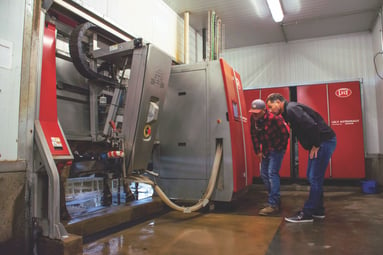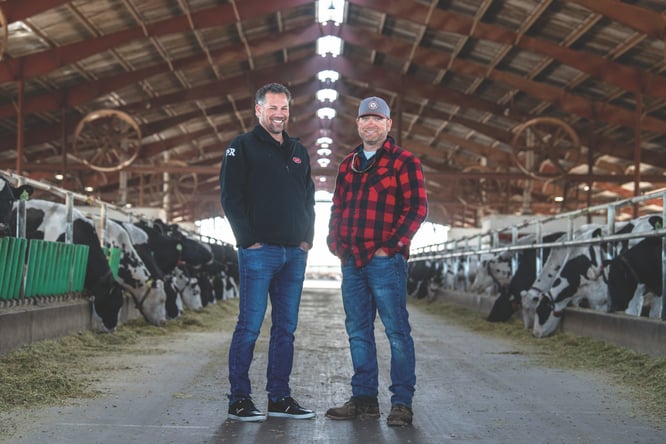To say Jon Postma has doubled down on robots is an understatement. In fact, just five years after installing 10 Lely Astronaut A4 robotic milking systems at his Modesto, California dairy in 2017, the decision was made to install another 12 Lely Astronaut A5 robotic milking systems for a total of 22 Lely milking robots in just half a decade. Jon wasn’t always so bullish on robots, however.
“When I visited the first robotic dairy farm, I was amazed,” he said. “You think to yourself, ‘There is no way the robotics can be that good.’ But when you see it and talk to the owners, you realize how good the robots work, how much data is collected about each cow and how efficient the operation is.”
In 2022, once the first wave of robots had been up and running for five years, the impact was easy to see. Jon reports that production and overall cow health improved significantly. “Cow comfort is what sold me,” he said. “The less stress on the cows, the happier and more productive they are. That’s what did it for me. Plus, over the last five years, we’ve been about $1.00 to $1.50/cwt more profitable than the parlor.” Results like this led Jon and his team to an obvious and logical conclusion: more robots.

The Postmas began their second robotic project in 2022 in much the same way they did their first, by working closely with their Lely Center, TDR, Inc out of Turlock, California. Ten years earlier TDR toured Lely dairies across the U.S. with the Postmas, helping them understand the benefits of robotic milking. “We really didn’t know what we were doing,” Jon said of the experience. “TDR did a fantastic job for us.” After multiple strategy sessions, the decision was made to retrofit the 12 new Lely Astronaut A5s into an existing freestall barn, as it was approximately half the cost of new construction on a green site. They also opted for a new “hybrid-flow” design that combines the Free Cow Traffic concept as well as areas of guided flow traffic. This method was introduced to Jon by his mentor Anton Borst, a Dutch heritage farmer with decades of dairy experience. Anton trialed and documented many different flow systems on his own farm over many years, leading Jon to the decision the new hybrid flow would work best for their new project.
There were a few factors that drove Postma Dairy toward more robots. First was the demonstrated profitability and production differences between their traditional and robotic parlors. This was a significant factor in providing their bank with the confidence to secure a new capital project loan. Next were the labor and management considerations. Before the latest installation, a third of their Holstein herd was being milked by Lely robots, with the other two thirds in a traditional parlor. “Managing between the two was a challenge,” said Jon. Adding, “And really from a labor standpoint, we did save on labor with the 10 robots that we had. We just knew that where we needed to be was at least two-thirds to be able to save and become even more efficient with labor from a management standpoint. The guys we had on staff were capable of doing more.” Decreasing man hours in the barn in tandem with the ability to optimize and redirect labor to higher value tasks is especially important in California which has a demanding regulatory environment combined with a historically difficult labor market. Suffice to say, labor was a significant factor in the decision-making process for the new installation. The third factor involved thinking about the future and succession planning. When asked if he felt robots made succession planning easier, Jon replied,
“Yes, if my kids want to stay in the dairy industry. I think the younger generation is more apt to want to be involved when it's automated.”
Thankfully for Jon’s kids, and customers, the future is looking bright. With “Phase 2” complete and all 22 robots now milking around the clock, the Postmas are already thinking about “Phase 3” in which their entire 2,300 head herd are milked by robots. Herd Manager Jose Mercado, who joined the dairy in January of 2023 and just before the new installation began, is enthusiastic about that future. “I’m impressed by how fast the cows, if you treat them right, adapt to the robots. It seems like you’re more rushed in a conventional barn.” Jose also mentioned that despite a “pretty rough summer” in Modesto, the herd continued to have good body condition overall and maintained strong production in output and solids.

